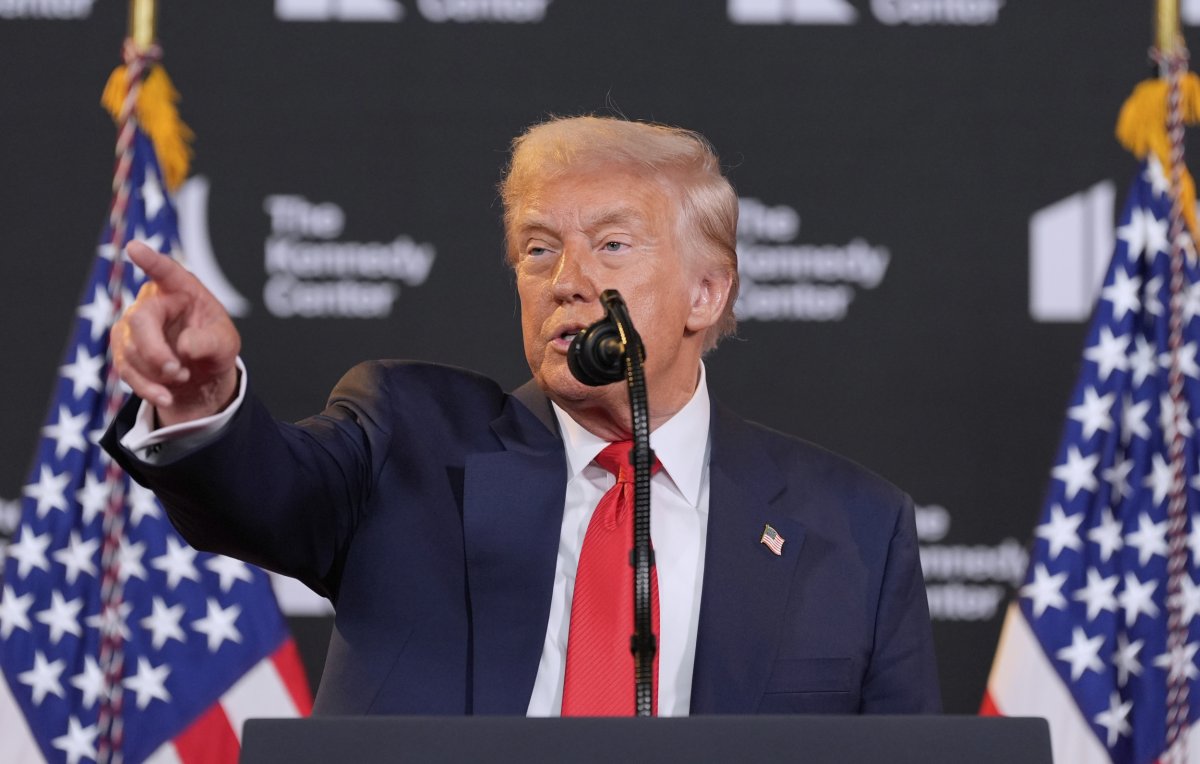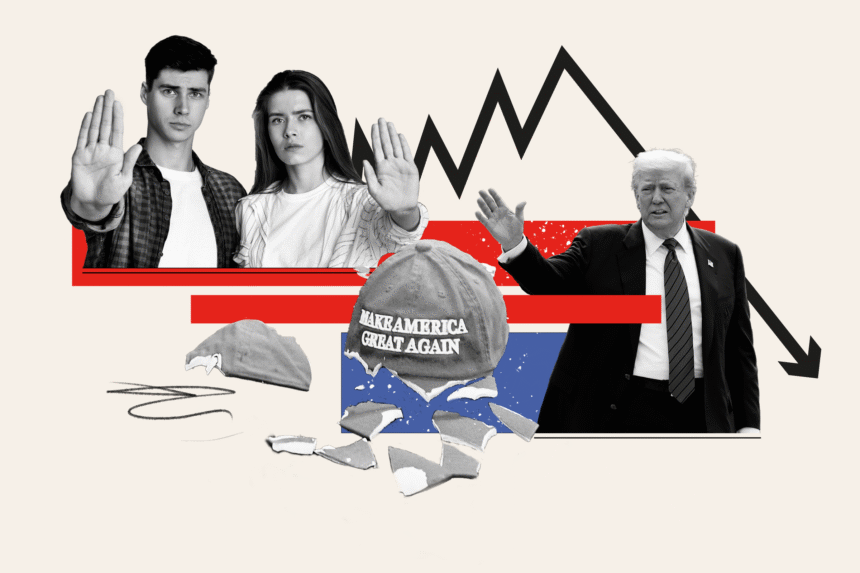President Donald Trump‘s approval rating has plummeted with millennials, hitting its lowest level of the year in August, according to new polling.
According to YouGov/Economist polling, in June, 40 percent of millennials approved of Trump’s job performance while 53 percent disapproved—a net rating of -13 points. That slid to 41-57 (-16) in July before plunging to 33-56 (-23) in August.
The figures show a 10-point drop in net approval in just two months, underscoring growing dissatisfaction among millennials as the 2025 political season intensifies.
Why It Matters
Trump, who has long highlighted strong polling at rallies and press events, now faces slipping approval ratings that could weaken his influence and hurt Republican prospects in the 2026 midterms.
After returning to the White House in January with solid numbers, his support has eroded amid economic concerns, tariff backlash and political discontent. Trump and former Vice President Kamala Harris have turned to podcasts and digital outreach to court millennials, a generation wary of legacy media and traditional messaging.
Millennials are defined generally as people born from 1981 to 1996. The generation has overtaken baby boomers as the largest age demographic, according to the Pew Research Center.
What To Know
The poll shows that Trump’s declining popularity among millennials is being driven by worsening views on the economy and inflation.
“Millennials have yet to see the sweeping national renewal Trump promised,” Thomas Gift, an associate professor of political science and director of the Centre on US Politics at University College London, told Newsweek.
On the economy, Trump’s approval among millennials slipped from 36 percent approval and 52 percent disapproval in June to 38 percent approval and 54 percent disapproval in August, showing that approval and disapproval has edged up the same.
Inflation also appears to be a particular weak spot. Approval in this area dropped from 33 percent in June to 27 percent in August, while disapproval rose from 58 percent to 60 percent. The shift suggests heightened concern among younger voters about persistent price pressures.
That comes as inflation rose to 2.7 percent in June despite Trump’s previous promise to end inflation on day one of his second term.
“Starting on day one, we will end inflation and make America affordable again, to bring down the prices of all goods,” he said during a rally in Bozeman, Montana, in August 2024.

Alex Brandon/AP
Meanwhile, job growth slowed sharply in July, with just 73,000 new jobs added—down from 147,000 the previous month, according to the U.S. Bureau of Labor Statistics. After last month’s jobs report was published, Trump fired BLS Commissioner Erika McEntarfer. In a post, Trump accused McEntarfer—without offering evidence—of rigging the numbers to harm his administration. But that move by Trump was not popular among millennial voters, with only 16 percent saying the decision was justified.
There are also concerns about Trump’s tariff program. Commerce Secretary Howard Lutnick predicted $50 billion in monthly revenue from the new import taxes, which came into effect this month. But JPMorgan warned that 60 percent of the increased costs are expected to be passed on to American consumers through higher prices.
“On the consumer side, many remain burdened by rising prices under his tariffs, while housing in particular continues to be out of reach for a generation still struggling to get a foothold on the economic ladder,” said Gift. According to Federal Reserve data, millennials own less than two-thirds of the real estate that baby boomers owned at the same age.
But it’s not all bad news for Trump. His handling of immigration remains a relative bright spot with this age group. Approval rose from 33 percent to 41 percent over the same period, while disapproval fell from 58 percent to 50 percent, marking an 8-point net improvement.
Throughout his second term, Trump has aggressively expanded immigration enforcement—launching mass deportation operations, increasing raids in sanctuary cities and reviving thousands of old deportation cases.
His administration has also dramatically scaled up detention capacity, allocating $45 billion to expand ICE facilities and construct large-scale temporary camps, including a facility in Florida nicknamed “Alligator Alcatraz.”
But while Trump has continued to push the hardline immigration agenda that helped him win support in 2024, polls indicate that backing for those policies is fading across other demographic groups.
Gallup polling from last month showed that 30 percent of Americans now say immigration levels should be reduced, down from 55 percent in 2024. Support for maintaining or increasing immigration has risen across the board, including among Republicans.
More broadly, the number of Americans who view immigration as a “good thing” has reached an all-time high of 79 percent, the same poll shows, reversing a steady decline during Joe Biden‘s presidency and surpassing levels from Trump’s first term.
What Happens Next
Trump’s new nominee to run the BLS, E.J. Antoni, chief economist at the conservative Heritage Foundation, hinted at suspending the monthly release of jobs data. August’s numbers are due to be published the first week of September.











